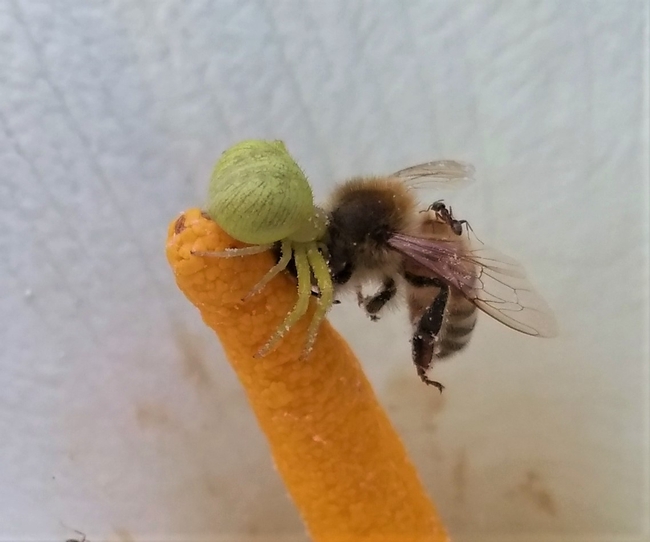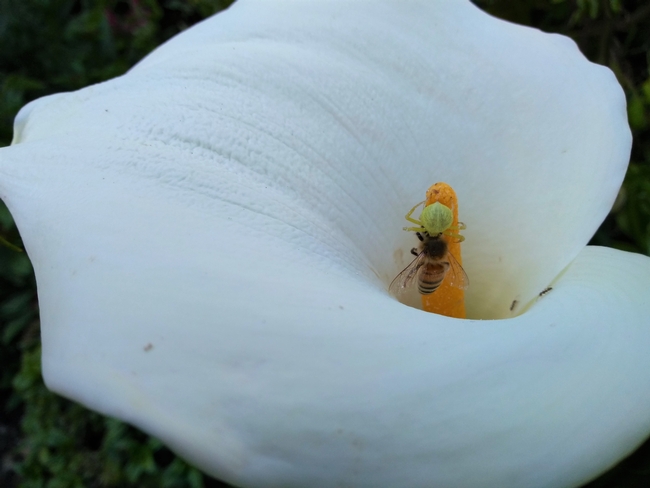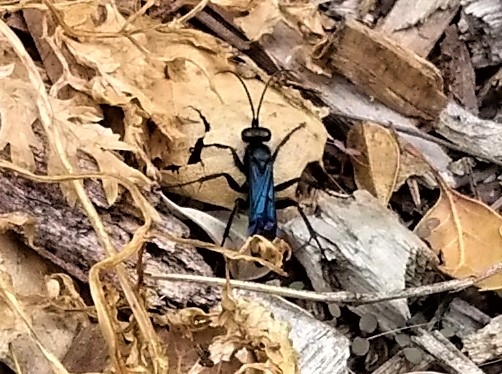
Posts Tagged: ecology
TREEmendous Learning Webinars for Middle and High School Students
This is a cross-post from the "Topics in Subtropics" blog.
Join us on alternate Tuesdays in May and June, 3:00 pm to 4:00 pm, for this opportunity designed for middle and high school students. Treemendous Tuesdays is a collaboration of U.S. Forest Service, Los Angeles Center for Urban Natural Resources, California Project Learning Tree, California 4-H, and University of California Agriculture and Natural Resources.
Five webinars will be hosted every other week starting May 5 and ending June 30. These events are free and registration is required. Flyer is attached. Dates, topics, and link to registration are below.
Please share this online opportunity with organizations, community members, teachers, parents, and students. We look forward to giving students a glimpse of the wonders and benefits that trees offer!
- May 5: Invasive Species (invasive shot hole borers)
- May 19: Invasive Plants & Trees
- June 2: Benefits of the Urban Forest
- June 16: iTree
- June 30: Living with Fire
Register https://ucanr.edu/survey/survey.cfm?surveynumber=29846
Eat or Be Eaten
In this weekly blog, Dr. Annemiek Schilder, Director, UCCE Ventura County and Hansen Agricultural Research and Extension Center, shares her observations about the natural world across the seasons. As she says:
"Gently observing your surroundings with curiosity will teach you some amazing things. There are so many fascinating things happening under our noses, only wanting for an observant eye."
As I was poking around my garden and looking at flowers, my eye suddenly fell on an odd-looking green spider carrying a honey bee on the spadix of a calla lily. My first thought was “poor bee”, working so hard to pollinate flowers and then getting caught by a spider – life is not fair!
A spider and a bee: eat or be eaten. Photo: Annemiek Schilder
Of course I was fascinated by the little scene and was wondering what was going on, what kind of spider was that? It was green with a large patterned abdomen and looked like one of those spiders that hang out in flowers. The spider hung on to the bee for a while, walking this way and that, it almost seemed too big for it to handle. The next day, I saw the dead bee lying at the bottom of the flower and no sign of the spider. I wondered if it had given up on the bee. As I looked into it, I discovered a much more sinister thing had taken place…
The spider turned out to be a flower crab spider (genus Misumena). These spiders are harmless to humans and often take on the color of the flower background to camouflage themselves. They have long “arms” like crabs to capture their prey and can walk forwards, backwards and sideways.
According to the Missouri Department of Conservation: “Crab spiders don't use webs to capture their prey; instead, they hide in flowers and wait for insects to come to them. Crab spiders often look like part of the flowers they inhabit. Unlike spiders that spin webs, crab spiders have good vision. When a bee, fly, or other prey lands on the flower seeking nectar, the crab spider attacks, injects venom into the prey, then holds it while drinking its juices.”
Flower crab spider feeding on honey bee blood, like a vampire! Do you notice another insect in the picture? This is an ant looking for nectar. Photo: Annemiek Schilder
So there we have the answer! The crab spider obviously sucked out the hemolymph (insect blood) and then discarded the bee corpse after dinner.
The next day it looked like the tables were turned: to my surprise, I saw a motionless brown spider being dragged by a blue-black insect into a hole in the ground. Before long, the same insect was walking nervously, zigzagging and fluttering its wings, over the ground. It was difficult to photograph since as soon as I approached, it would fly away.
However, I got a closer look at it by zooming in on the photograph: it turned out to be a spider wasp in the family Pompilidae, which often have a bluish-black body with a metallic sheen. They have long spiny legs and curved antennae. Spider wasps are solitary and the adults feed on flower nectar. The female wasps hunt spiders which they sting and paralyze, then drag to their burrows in the ground. Next, the female wasp lays a single egg in the spider and as the larva grows, it eats the insides of the still-living spider. How's that for a horror story to keep you up at night?
Spider wasp looking for a spider to attack among wood chips and leaves. Photo: Annemiek Schilder
I then remembered seeing a giant wasp over 2 inches long in Costa Rica. That wasp was a Tarantula hawk, which hunts and lays eggs in tarantulas. They are not aggressive towards humans but can give one of the most painful insect stings in the world when handled!
Did you know that Dr. Justin Schmidt, an entomologist (someone who studies insects) from Arizona, devised a scale known as the Schmidt Sting Pain Index? To develop this scale, he allowed himself to be stung by a variety of wasps, bees and ants. He rated the Tarantula hawk's sting as a “4” on a 0-4 scale and described it as "blinding, fierce, and shockingly electric. A running hair dryer has been dropped into your bubble bath. A bolt out of the heavens. Lie down and scream."
So look, but don't touch, is the best strategy!




